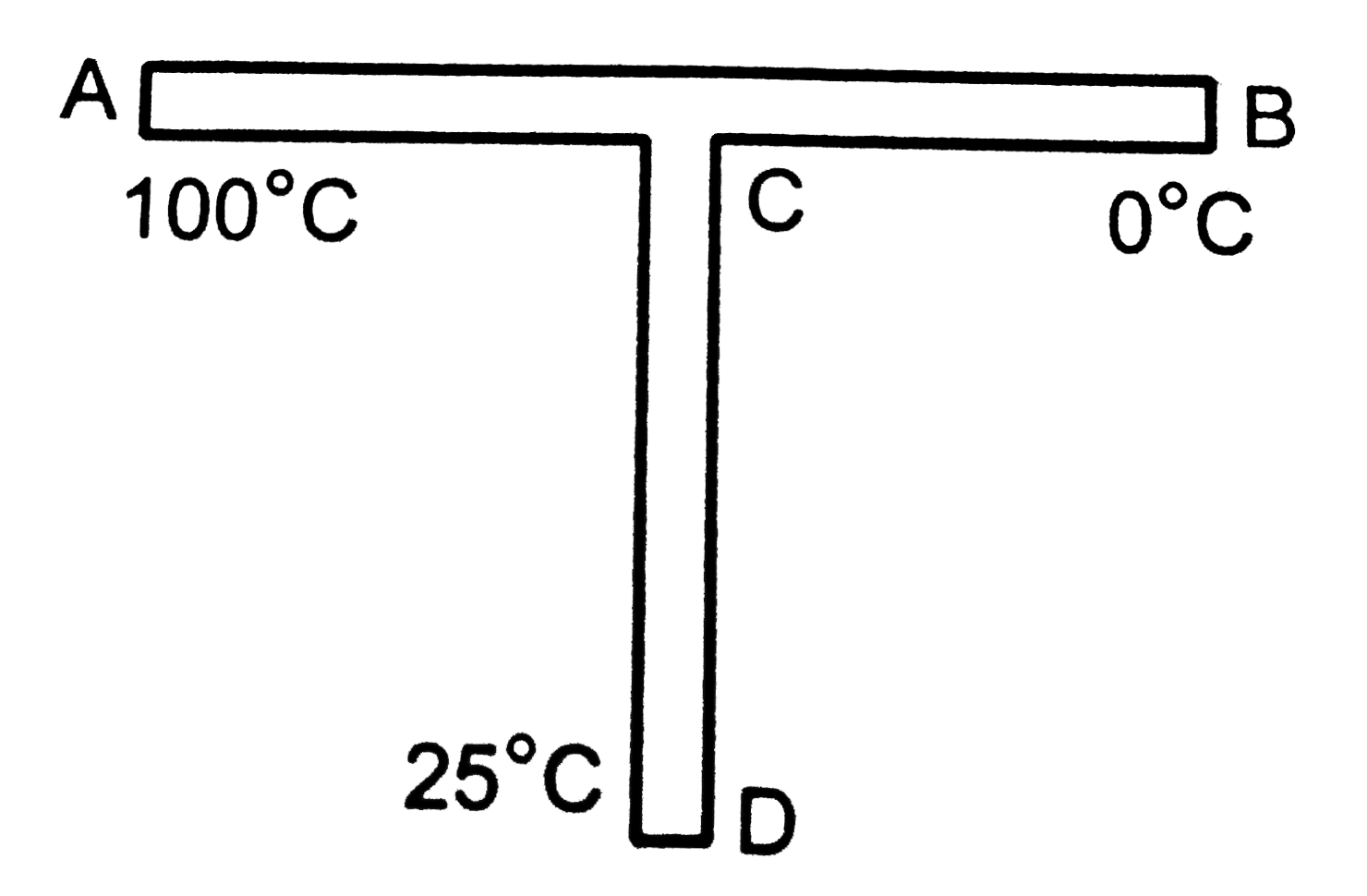worked out examples from HC VERMA HEAT TRANSFER for Class 11
| Class 11 | PHYSICS |
| Chapter | HEAT TRANSFER |
| HC VERMA | worked out examples |
| Medium | English |
| Academic Year | 2023-2024 |
Question 1
The lower surface of a slab of stone of face-area 3600cm2 and thickness 10cm is exposed to steam at 100∘C . A block of ice at 0∘C rests on the upper surface of the slab. 4.8g of ice melts in one hour. Calculate the thermal conductivity of the stone. Latent heat of fusion of ice =3.36×105Jkg−1View SolutionQuestion 4
Two rods of same length and cross section are joined along the length. Thermal conductivities of first and second rod are K1 and K2. The temperature of the free ends of the first and second rods are maintained at θ1 and θ2 respectively. The temperature of the common junction isView SolutionQuestion 5
Two parallel plates A and B are joined together to form a compound plate . The thicknesses of the plate are 4.0cm and 2.5cm respectively and the area of cross section is 100cm2 for each plate. The thermal conductivities are KA=200Wm−1C−1 for plate A and KB=400Wm−1C−1 for the plate B. The outer surface of the plate A is maintained at100∘C and the outer surface of the plate B is maintained at 0∘C. Find (a) the rate of heat flow through any cross section, (b) the temperature at the interface and (c) the equivalent thermal conductivity of the compound plate.
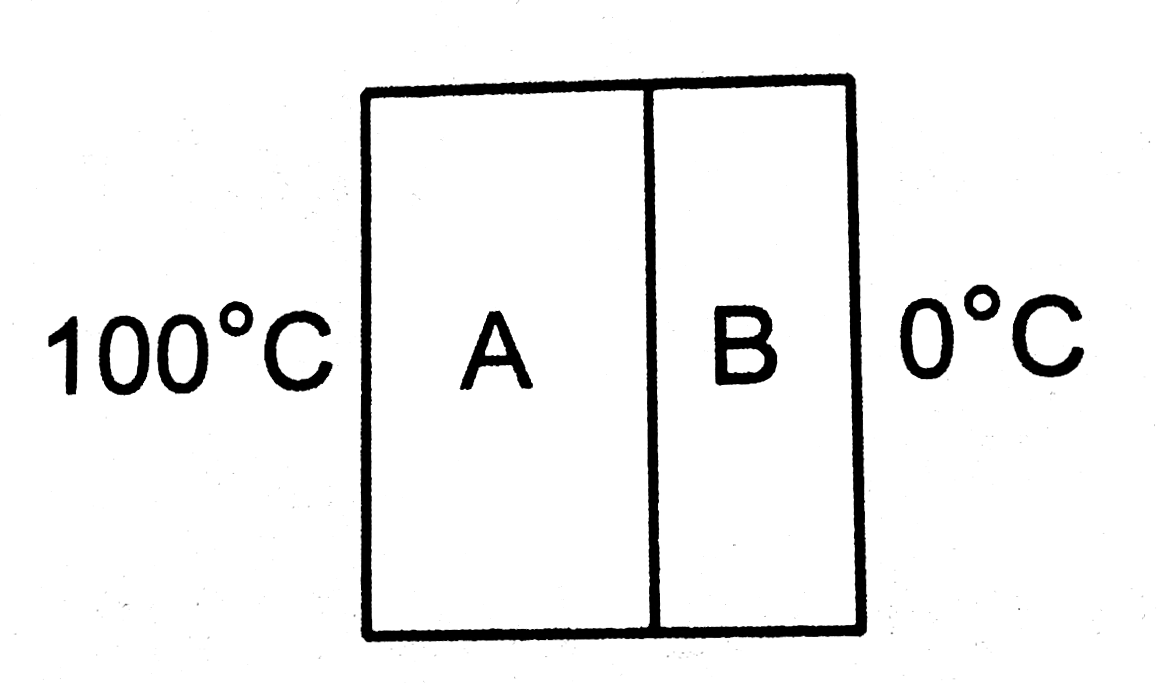 View Solution
View SolutionQuestion 7
An electric heater is used in a room of total wall area 137m2 to maintain a temperature of 20∘C inside it, when the outside temperature is −10∘C .The walls have three different layers of materials. The innermost layer is of wood of thickness 2.5cm, the middle layer is of cement of thickness 1.0cm and the outermost layer is of brick of thickness 25.0cm. Find the power of the electric heater. Assume that there is no heat loss through the floor and the celling. The thermal conductivities of wood, cement and brick are 0.125Wm−1C−1 , 1.5Wm−1C−1 . and 1.0Wm−1C−1 respectively.
View SolutionQuestion 8
Three rods of material x and three of material y are connected as shown in figure. All the rods are identical in length and cross sectional area. If the end A is maintained at 60∘C and the junction E at 10∘C , calculate the temperature of the junction B. The thermal conductivity of x is 800Wm−1C−1 and that of y is 400Wm−1C−1 .
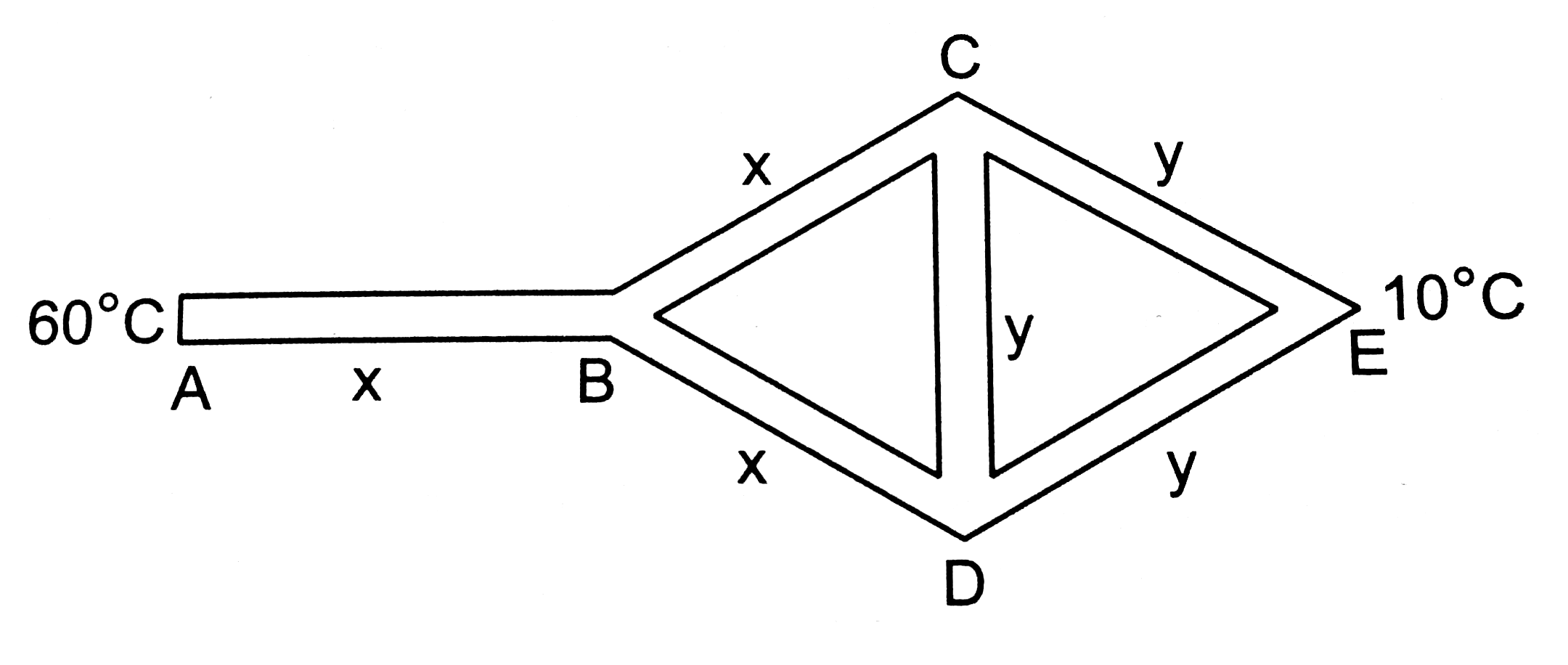 View Solution
View SolutionQuestion 10
Two thin metallic spherical shells of radii r1 and r2 (r1<r2) are placed with their centres coinciding. A material of thermal conductivity K is filled in the space between the shells. The inner shells is maintained at temperature θ1 .and the outer shell at temperature θ2 (θ1<θ2). Calculate the rate at which heat flows radially through the material.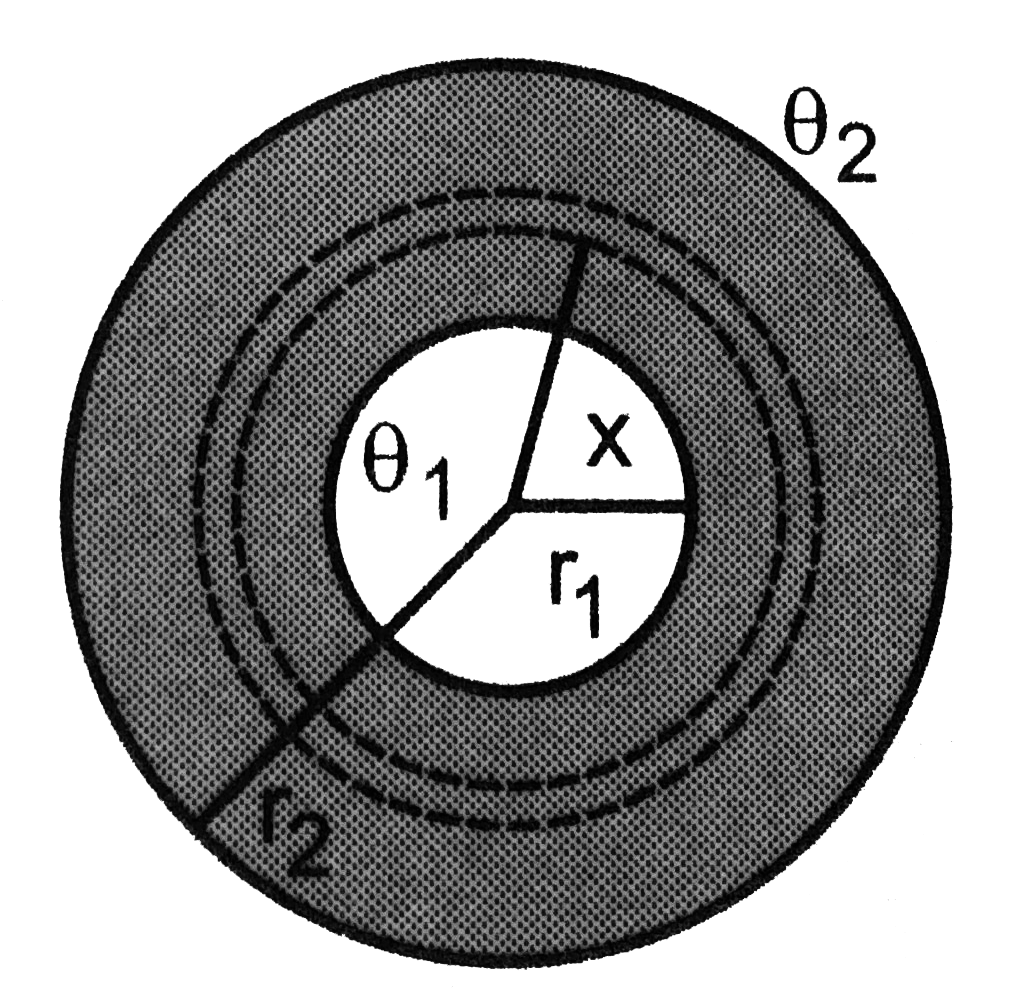 View Solution
View SolutionQuestion 11
On a cold winter day, the atmospheric temperature is −θ (on celsius scale) which is below 0∘C. A cylindrical drum of height h made of a bad conductor is completely filled with water at 0∘C and is kept outside without any lid. Calculate the time taken for the whole mass of water to freeze. Thermal conductivity of ice is K and its latent heat of fusion is L. Neglect expansion of water on freezing.
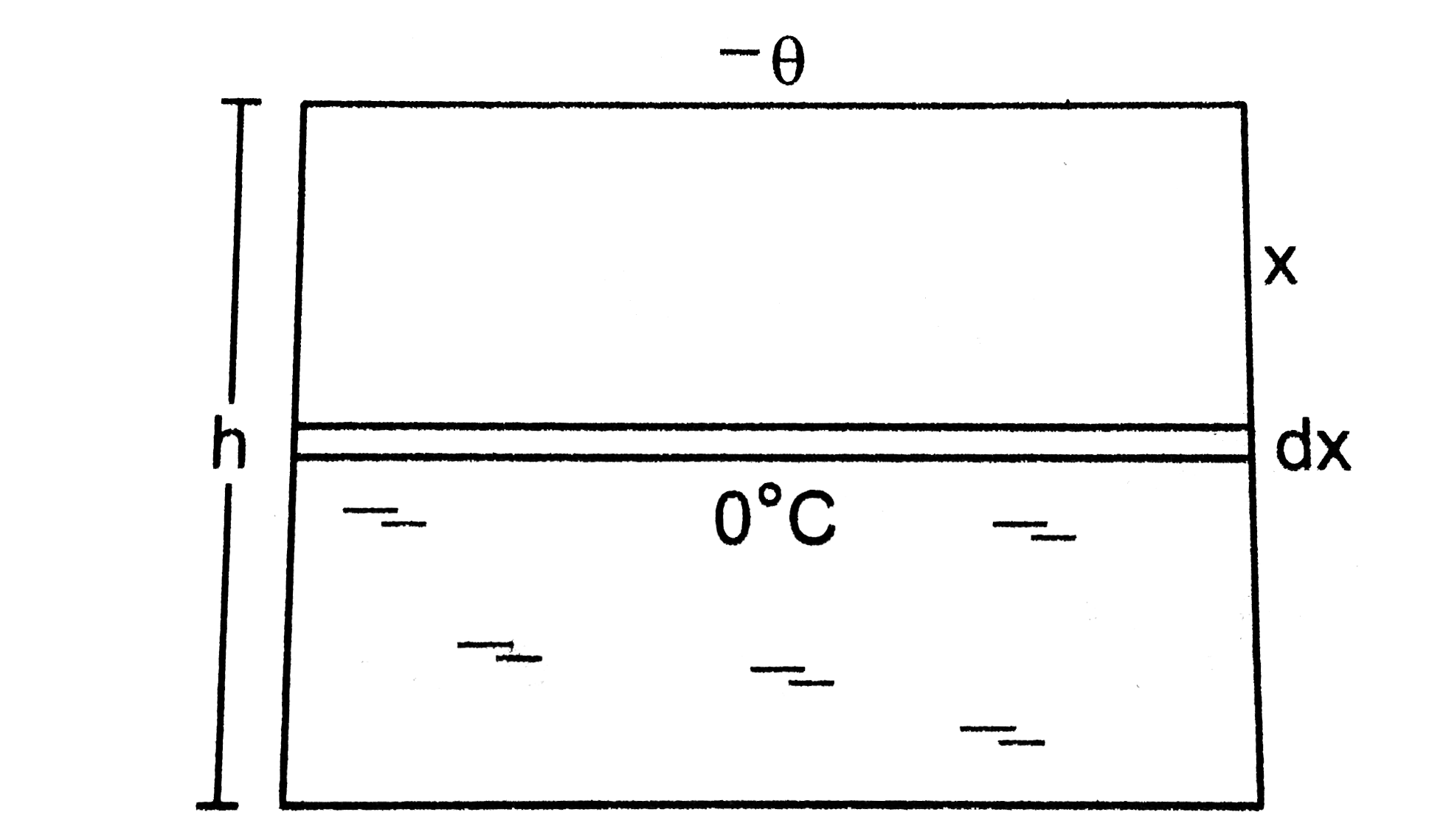 View Solution
View SolutionQuestion 12
Figure shows a large tank of water at a constant temperature θ0 and a small vessel containing a mass m of water at an initial temperature θ1(<θ0). A metal rod of length L, area of cross section A and thermal conductivity K connects the two vessels. Find the time taken for the temperature of the water in the smaller vessel to become θ2(θ1<θ2<θ0) . Specific heat capacity of water is s and all other heat capacities are negligible.
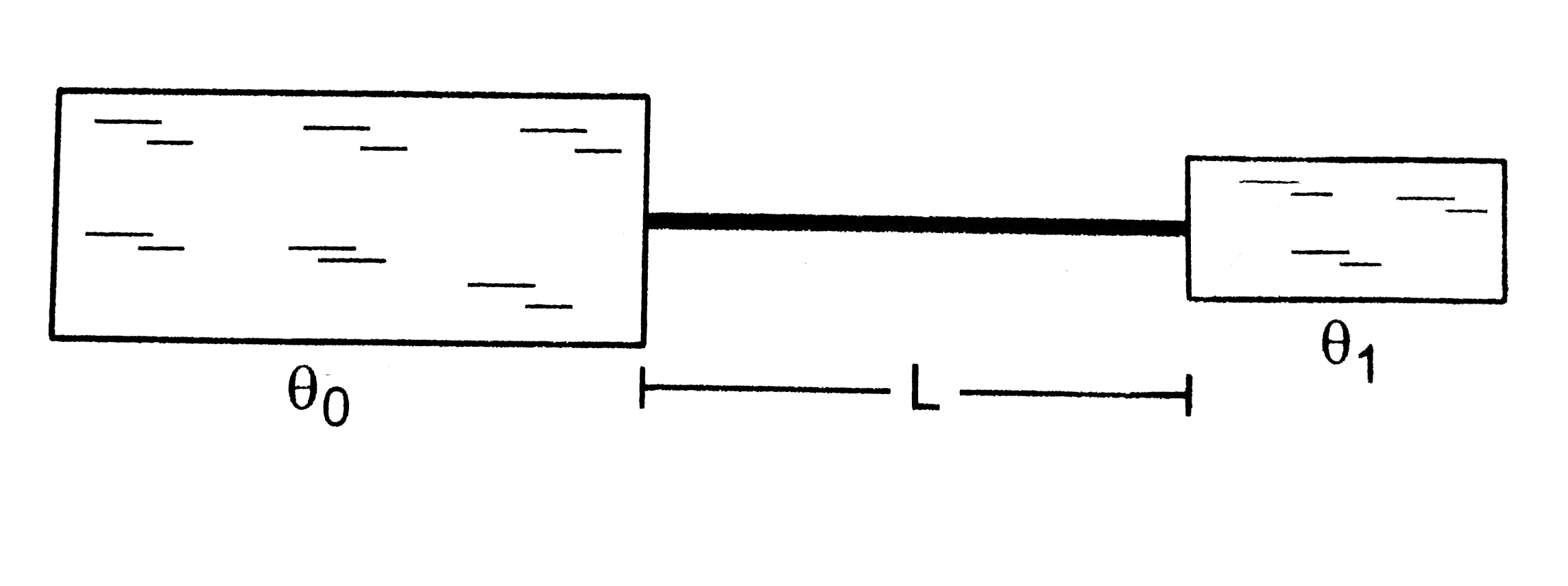 View Solution
View SolutionQuestion 13
One mode of an ideal monatomic gas is kept in a rigid vessel. The vessel is kept inside a steam chamber whose temperature is 97∘C . Initially, the temperature of the gas is 5.0∘C . The walls of the vessel have an inner surface of area 800cm2 and thickness 1.0cm If the temperature of the gas increases to 9.0∘C in 5.0 second, find the thermal conductivity of the material of the walls. View SolutionQuestion 14
A monatomic ideal gas is contained in a rigid container of volume V with walls of total inner surface area A, thickness x and thermal conductivity K. The gas is at an initial temperature t0 and pressure P0 . Find the pressure of the gas as a function of time if the temperature of the surrounding air is Ts . All temperature are in absolute scale. View Solution
All Exercises from HC VERMA Class 11 PHYSICS HEAT TRANSFER
- EXERCIESE
- EXERCISES
- EXERCIESE
- EXERCISES
- EXERCIESE
- EXERCIESE
- EXERCISES
- EXERCIESE
- EXERCISES
- EXERCIESE
- EXERCIESE
- EXERCISES
- EXERCIESE
- EXERCISES
- EXERCIESE
- EXAMPLES
- EXAMPLES
- EXAMPLE
- EXAMPLES
- EXAMPLES
- EXAMPLE
- EXAMPLES
- EXAMPLES
- EXAMPLE
- OBJECTIVE 1
- OBJECTIVE 1
- OBJECTIVE I
- OBJECTIVE 1
- OBJECTIVE 1
- OBJECTIVE I
- OBJECTIVE 1
- OBJECTIVE 1
- OBJECTIVE I
- OBJECTIVE 2
- OBJECTIVE 2
- OBJECTIVE II
- OBJECTIVE 2
- OBJECTIVE 2
- OBJECTIVE II
- OBJECTIVE 2
- OBJECTIVE 2
- OBJECTIVE II
- SHORT ANSWER
- SHORT ANSWER
- QUESTIONS FOR SHORT ANSWER
- SHORT ANSWER
- SHORT ANSWER
- QUESTIONS FOR SHORT ANSWER
- SHORT ANSWER
- SHORT ANSWER
- QUESTIONS FOR SHORT ANSWER
- WORKED OUT EXAMPLES
- WORKED OUT EXAMPLES
- WORKED OUT EXAMPLES
- WORKED OUT EXAMPLES
- WORKED OUT EXAMPLES
- WORKED OUT EXAMPLES
- WORKED OUT EXAMPLES
- WORKED OUT EXAMPLES
- WORKED OUT EXAMPLES
